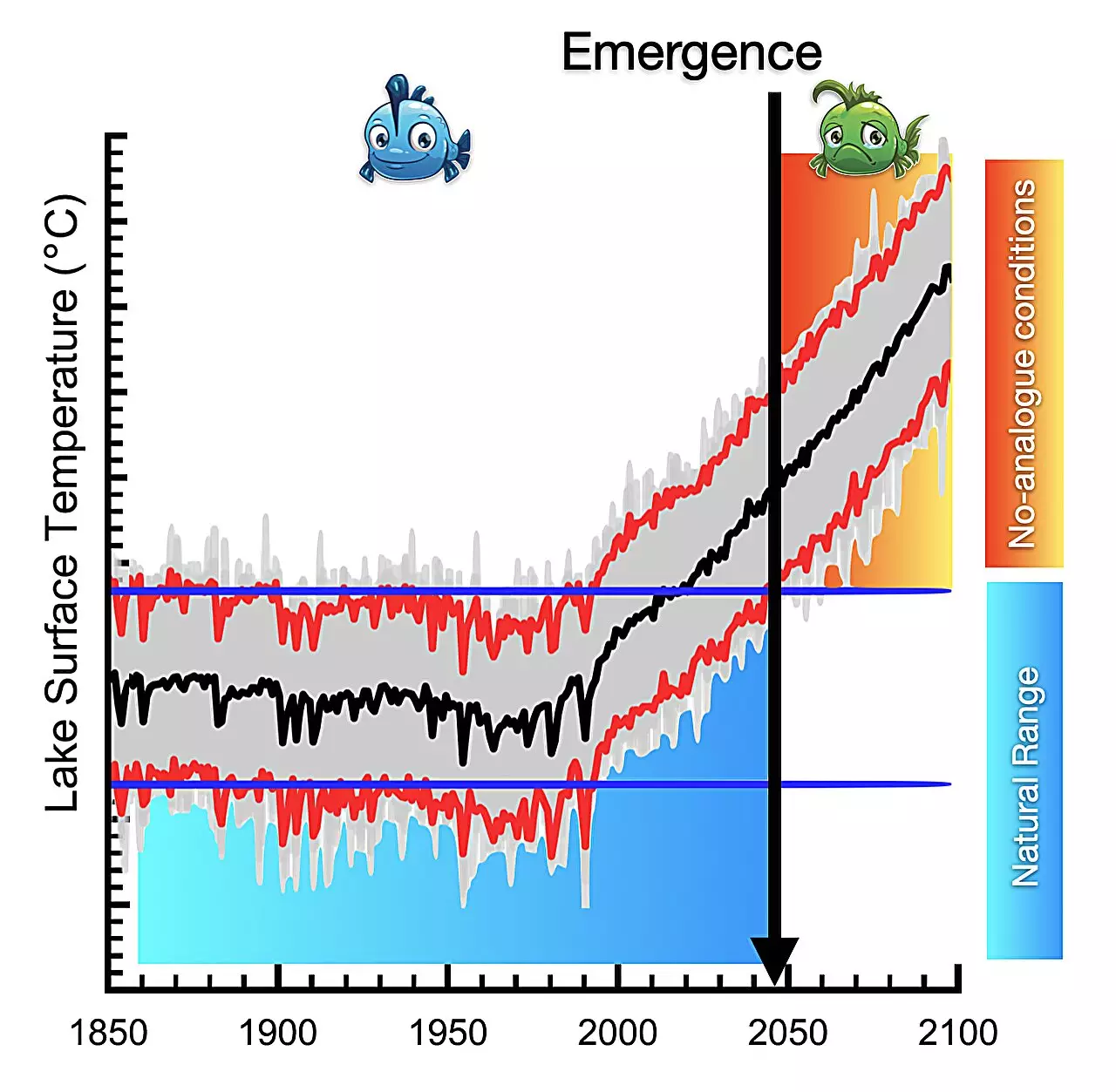Lakes, often overlooked in climate discussions, are facing a dire threat. As crucial components of our planet’s biodiversity, they provide significant ecological services, such as water purification, flood control, and habitat for countless species. However, a striking study recently published in *Nature Geoscience* has illuminated a worrying trend: the diseases of thermodynamics and climate change are about to bring lakes face-to-face with unprecedented surface and subsurface warming. This trend, if left unaddressed, could drive many aquatic ecosystems to the brink of collapse, revealing an urgent need for immediate action.
The study conducted by an international team consisting of limnologists and climate modelers has utilized the latest in climate model technology, namely the Community Earth System Model (CESM) version 2. By simulating lake temperature data across a timeline from 1850 to 2100 CE, this groundbreaking research is the first to intricately model lake systems in concert with atmospheric changes, offering a clear picture of how anthropogenic warming is likely to reshape these vital aquatic environments.
The Methodology Behind the Findings
One notable strength of this research is its sophisticated ensemble modeling approach. The scientists ran 100 separate simulations—each capturing slightly different manifestations of natural climate variability while simultaneously incorporating the effects of increasing greenhouse gas concentrations. Conducted on one of South Korea’s supercomputers, the “Aleph” at the Institute for Basic Science, these simulations provide a more comprehensive understanding of future lake conditions, allowing researchers to dissect the natural variability of lake temperatures from human-induced changes effectively.
This rigorous methodology empowers scientists to identify the inflection point at which lake temperatures might exceed the historical norms—an occurrence known as “no-analog conditions.” Dr. Lei Huang, the study’s leading author, highlights a critical takeaway: by the end of the century, average global lake climates will be utterly transformed, with unique climatic conditions emerging independently of historical precedents. The implications of this finding are staggering; we are not just observing a shift but entering uncharted territory.
Tropical Lakes: The First Casualties
Perhaps the most alarming aspect of this study is the pronounced impact expected on tropical lakes. These ecosystems, which boast remarkable biodiversity, are projected to encounter outlandishly high temperatures once global warming escalates by around 2.4°C compared to pre-industrial levels. Dr. Iestyn Woolway, the paper’s co-author, notes that this warming might lead to the rapid emergence of no-analog conditions within the subsurface layers of these lakes.
In shallow habitats, species may adapt through vertical migration to find suitable habitats, yet this flexibility is limited. When temperatures soar beyond historical ranges, many organisms may face existential threats, unable to move to appropriate depths or locales. This suggests a future fraught with ecological disruption, particularly for tropical lake species that are less capable of adapting to rapid changes in temperature.
The Delayed Impact on High-Latitude Lakes
Interestingly, the study also reveals contrasting dynamics in high-latitude lakes, which may be somewhat insulated from these immediate adverse effects due to natural stratification. The layers of water can create barriers, delaying the penetration of surface warming into the depths. This stratification, while temporarily offering a reprieve, is not a permanent solution. As global warming persists, even these lakes will eventually succumb to no-analog conditions.
The implications extend far beyond just temperature increases. As ecosystems in these lakes shift, the implications reverberate throughout entire food webs. The repercussions on populations of fish, invertebrates, and even the communities of microorganisms that support the entire aquatic ecosystem will be profound. With the intersection of complex interactions, such a shift could alter lake chemistry, affect nutrient cycles, and disrupt the delicate balance that keeps these ecosystems healthy.
Moving Forward: A Call to Action
Given these urgent findings, the race against time to understand and mitigate the impacts on lake ecosystems has never been more crucial. Unlike their terrestrial and marine counterparts, lake species tend to have limited migratory capabilities, making them acutely vulnerable to changes in their environments. Thus, the urgency of grasping the timing and nature of the no-analog climate emergence cannot be overstated. This understanding is pivotal, not just for academic inquiry, but for devising effective climate adaptation and conservation strategies. Without such insights, we risk plunging into a future where the vital services provided by lakes deteriorate unchecked, posing risks not just to biodiversity but to human societies reliant on these critical water bodies. Immediate and concerted efforts are essential if we are to mitigate these dire forecasts and protect our lakes for future generations.


Leave a Reply